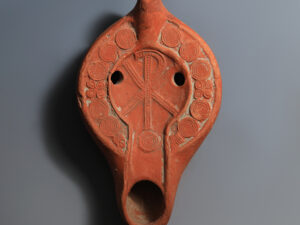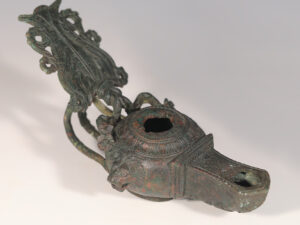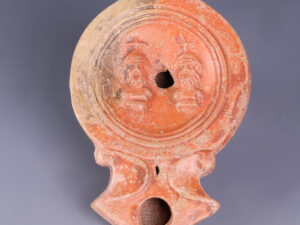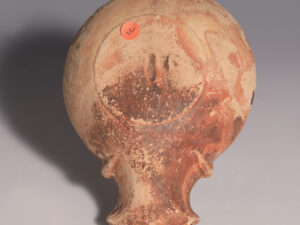The earliest oil lamps made from clay can be dated back to the Bronze Age, to around the sixteenth century BC and by the Roman period, oil lamps, or lychnus, from the Greek λυχνος, were commonplace throughout the Empire. They were used for domestic, public, and religious purposes, including funeral ceremonies, lighting up businesses, and creating ‘special effects’ at the theatre. The oldest Roman lamps date back to the third century BC, and it is thought that they were influenced by the Southern Italic style. These were more enclosed than their predecessors, allowing for further decoration on the discus. The vast trade networks set with the expansion of the Roman Empire allowed this item to be spread across Europe, Eastern Asia and Northern Africa, which led to the development of several provincial variations.
The motif of the grapevine was common in Ancient Roman art, featuring on mosaics, frescos, sarcophagi, monumental sculptures, architecture, jewellery, and oil lamps such as this piece. It often referred to Bacchus, the god of wine, theatre, agriculture, fertility, and pleasure, identified by the Greeks as Dionysus. Wine, made from grapes, played a key role in Ancient Roman society, it was a daily necessity, and so was widely available to all in various qualities.























